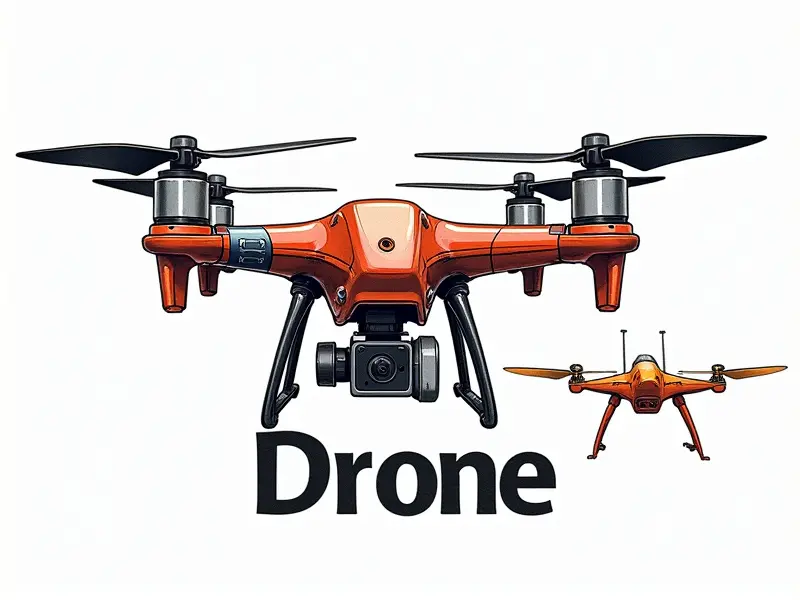Propeller pitch and diameter

How Propeller Pitch Affects RC Performance
The pitch of a propeller is one of the most crucial factors in determining the performance of your remote-controlled (RC) aircraft. The pitch refers to the distance that a propeller would move forward through the air with one complete revolution, assuming no slippage. This parameter directly influences how fast and efficiently an RC model can fly.
A higher pitch means more thrust for each rotation but requires more power from the motor. Conversely, a lower pitch allows for quicker acceleration and better low-speed handling but may limit top speed potential. Therefore, choosing the right propeller pitch is essential to balancing performance requirements such as agility, climb rate, and cruising speed.
Understanding Propeller Pitch vs. Diameter
The diameter of an RC propeller refers to its overall size from tip to tip. Larger diameters provide more surface area for air displacement, which can result in greater lift and thrust at lower RPMs compared to smaller props with similar pitch settings.
- Pitch: The angle at which the blade cuts through the air; affects climb rate and top speed.
- Diameter: The physical size of the propeller; influences lift generation and overall thrust output.
Choosing the Right Propeller Size for FPV Racing
Selecting the appropriate propeller size is critical when setting up an RC aircraft, especially for fast-paced First-Person View (FPV) racing. Smaller diameter props with higher pitches offer quicker acceleration and tighter maneuverability.
- Smaller Diameters: More agile handling at lower speeds; ideal for quick turns and tight spaces.
- Larger Pitches: Higher top speed potential but may require more powerful motors to achieve optimal performance.
Balancing Speed and Stability with Propellers
To optimize both speed and stability in your RC setup, consider the interplay between propeller pitch and diameter. A balance must be struck to ensure that while achieving high speeds, the aircraft remains controllable and stable under varying flight conditions.
Key Considerations
- Aerodynamic Efficiency: Opt for pitches and diameters that maximize lift-to-drag ratios.
- Motor Power: Ensure the motor can handle the load imposed by your chosen propeller configuration.
Maximizing Efficiency with Optimal Propeller Pitch
Finding the optimal pitch for your RC aircraft involves a combination of trial and error along with theoretical calculations. Higher pitches generally translate to better efficiency at higher speeds, but they demand more power from the motor.
- High Pitches: Suitable for racing or high-speed applications where sustained flight is critical.
- Moderate Pitches: Offer a balanced performance profile with good acceleration and cruising speed.
The Impact of Propeller Diameter on Flight Time
A larger propeller diameter can significantly affect the endurance of your RC aircraft. While bigger props provide more lift and thrust, they also consume more energy due to increased surface area exposed to air resistance.
- Energy Consumption: Larger diameters mean higher power consumption; thus shorter flight times unless powered by a high-capacity battery.
Mastering RC Props: Size & Pitch Matters
To truly master the art of configuring your RC aircraft for peak performance, understanding how propeller size and pitch interact is paramount. Experimentation with different combinations can yield surprising results in terms of speed, stability, and efficiency.
Tips for Experimenting
- Start Small: Begin testing with smaller diameter props to understand basic performance characteristics.
- Increase Gradually: Progressively increase pitch or diameter while monitoring flight dynamics and power consumption.
Propeller Pitch: Key to Speed and Efficiency
The pitch of your propeller is a key determinant in achieving optimal speed and efficiency for various RC applications. A well-chosen pitch can make the difference between mediocre performance and outstanding results.
- Pitch Selection: Choose pitches based on intended use (e.g., racing, acrobatics).
Enhancing Flight Dynamics with Perfect Propellers
Selecting the perfect propeller for your RC aircraft not only enhances flight dynamics but also ensures a more enjoyable and responsive flying experience. Properly sized and pitched props allow pilots to exploit their vehicles' full potential.
Tips for Enhancing Performance
- Match Propellers to Motors: Ensure compatibility between propeller specifications and motor capabilities.
Balancing Propeller Pitch vs. Diameter in RC Helis
For remote-controlled helicopters, balancing pitch and diameter is even more critical due to the unique aerodynamic challenges posed by vertical flight. Proper configuration ensures stable hover performance as well as efficient forward movement.
- Hover Stability: Focus on moderate pitches for better stability during hovering maneuvers.
Quick Guide to Propeller Dimensions
A concise guide to selecting propellers based on dimensions can simplify the process of optimizing your RC setup. Considerations such as RPM, motor power, and intended use should inform your choice.
- Measurements: Always measure both pitch and diameter accurately before making a selection.
Conclusion
In summary, understanding the relationship between propeller pitch and diameter is essential for achieving optimal performance in remote-controlled aircraft. By carefully selecting these parameters based on your specific needs and constraints, you can unlock superior speed, efficiency, and stability in your RC models.

